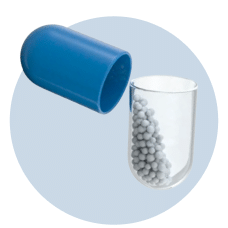Febrex 150mg Drop
Product introduction
Febrex 150mg Drop may be prescribed alone or in combination with another medicine. You should take it regularly as advised by your doctor. It is usually best taken with food otherwise it may upset your stomach. Do not take more or use it for longer than recommended.
Side effects are rare if this medicine is used correctly but this medicine may cause stomach pain, nausea, and vomiting in some people. Consult your doctor if any of these side effects bother you or do not go away.
This medicine is widely prescribed and considered safe but is not suitable for everybody. Before taking it, let your doctor know if you have liver or kidney problems or are using blood-thinning medicines. It may affect the dose or suitability of this medicine. Let your doctor know about all the other medicines you are taking because they may affect, or be affected by, this medicine.
Uses of Febrex Drop
Benefits of Febrex Drop
In Pain relief
In Treatment of Fever
Side effects of Febrex Drop
Common side effects of Febrex
- Headache
- Constipation
- Itching
- Insomnia (difficulty in sleeping)
- Nausea
- Vomiting
How to use Febrex Drop
How Febrex Drop works
Safety advice
However, Febrex 150mg Drop contains paracetamol which is considered the safest painkiller for kidney disease patients.
However, the use of Febrex 150mg Drop is not recommended in patients with severe liver disease and active liver disease.
What if you forget to take Febrex Drop?
All substitutes
Quick tips
- Febrex 150mg Drop should be taken with food or milk to prevent an upset stomach.
- Take it as per the dose and duration prescribed by your doctor. Long-term use may lead to serious complications such as stomach bleeding and kidney problems.
- Do not take indigestion remedies (antacids) within two hours of taking Febrex 150mg Drop.
- Avoid consuming alcohol while taking this medicine as it can increase your risk of stomach problems.
- Inform your doctor if you have liver disease as your dose may need to be adjusted.
- The doctor may regularly monitor your kidney function, liver function, and levels of blood components if you are taking Febrex 150mg Drop for long-term treatment.
Fact Box
Interaction with drugs
Patient concerns
FAQs
What if I vomit after taking Febrex 150mg Drop?
When will I feel better after taking the Febrex 150mg Drop?
How often can I take the Febrex 150mg Drop?
Is Febrex 150mg Drop an antibiotic?
Can I take Febrex 150mg Drop and ibuprofen together?
How long does a Febrex 150mg Drop take to work?
What are the serious side effects of taking an excess of the Febrex 150mg Drop?
Can Febrex 150mg Drop cause nausea and vomiting?
Is Febrex 150mg Drop helpful in relieving stomach pain due to indigestion?
Can I take Febrex 150mg Drop with an antibiotic?
What if I vomit after taking Febrex 150mg Drop?
When will I feel better after taking the Febrex 150mg Drop?
How often can I take the Febrex 150mg Drop?
Does Febrex 150mg Drop make babies sleepy?
Is Febrex 150mg Drop safe for children?
Is Febrex 150mg Drop an antibiotic?
Can I take Febrex 150mg Drop and ibuprofen together?
How long does a Febrex 150mg Drop take to work?
What are the serious side effects of taking an excess of the Febrex 150mg Drop?
Disclaimer:
Tata 1mg's sole intention is to ensure that its consumers get information that is expert-reviewed, accurate and trustworthy. However, the information contained herein should NOT be used as a substitute for the advice of a qualified physician. The information provided here is for informational purposes only. This may not cover everything about particular health conditions, lab tests, medicines, all possible side effects, drug interactions, warnings, alerts, etc. Please consult your doctor and discuss all your queries related to any disease or medicine. We intend to support, not replace, the doctor-patient relationship.References
- Furst DE, Ulrich RW, Varkey-Altamirano C. Nonsteroidal Anti-Inflammatory Drugs, Disease Modifying Antirheumatic Drugs, Nonopioids Analgesics, & Drugs Used in Gout. In: Katzung BG, Masters SB, Trevor AJ, editors. Basic and Clinical Pharmacology. 11th ed. New Delhi, India: Tata McGraw Hill Education Private Limited; 2009. pp. 635-36.
- Grosser T, Smyth E, FitzGerald GA. Anti-Inflammatory, Antipyretic, and Analgesic Agents; Pharmacotherapy of Gout. In: Brunton LL, Chabner BA, Knollmann BC, editors. Goodman & Gilman’s: The Pharmacological Basis of Therapeutics. 12th ed. New York, New York: McGraw-Hill Medical; 2011. pp. 982-84.
- Briggs GG, Freeman RK, editors. A Reference Guide to Fetal and Neonatal Risk: Drugs in Pregnancy and Lactation. 10th ed. Philadelphia, PA: Wolters Kluwer Health; 2015. pp. 8-12.
Marketer details
The list of available options shown with the same composition has been prepared upon the advice of registered medical practitioners, pharmacists affiliated with TATA 1MG. TATA 1MG does not promote any pharmaceutical product of any particular company, and all recommendations are based on the medical opinion, advisories from specialist medical and pharmaceutical professionals.
Lab tests offered by us










